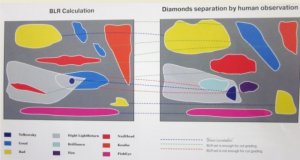Lightfoot
Rough_Rock
- Joined
- Jul 9, 2009
- Messages
- 58
Lula|1300466343|2874678 said:But what I've seen change over the years is the appreciation for the cut nuts among us who can see the differences and are willing to pay extra for those differences. I know we are a minority, but our opinions didn't used to be discounted the way they are now on RT. You know, I have better things to do with my time than post on RT and on this thread in particular. But the reason I stick it out is because of the way I was treated when I was a newbie -- my choices were supported, even when that choice is to go with a more expensive choice than most would choose. But now, the SOP on PS seems to be "why pay more for super-duper cut when you won't be able to see the differences" or "if it's an AGS 0, you don't have to be concerned about cut," etc., and when those of us who have chosen to pay more explain our reasoning, we are dismissed.
Lula, I think you bring up a really great point about PS here - that it should always be supportive and accepting of the numerous preferences people can have when it comes to diamond shopping. And it would truly be a shame if PS were not that way - I've never seen a place where newbies are so welcomed, helped and educated with open arms as PS.
It also makes me sad to think about people such as John P. not wanting to post as much in PS. Of the two diamond question topics I started on PS, John answered in both and was always extremely helpful and unbiased - I truly appreciated his input and it helped with my education. My personal opinion is that it can be tough for the tradespeople to post in an educational manner on PS because they could be criticized for promoting for so many different things. If people are so quick to jump on them, and that drives them away, then it just leaves fewer tradespeople around to provide different sides of the story, thus possibly leaving us more likely to jump on the few that do post, no? But with more tradespeople and healthy discussion among them and the consumers, I think everyone wins.
The issue of gaming aside, I think if one thing viewers of this thread can take away is a feeling that many respected PS contributors (trade and not) would like more acceptance and support and healthier discourse among differing opinions, then that is a good thing. I will personally respect those sentiments. With diamonds, there is room for so many different preferences - none better than the other. And I think we should be a little understanding of those tradespeople that do work with PS vendors, because I personally think it is difficult to give helpful advice in such a careful way as to not be considered promoting (and they have regularly accomplished this).
With that said, I apologize to the cut nuts if my comments earlier about "what you take home with a diamond" were disrespectful. PS has actually made me a big cut fan myself and I don't think I was remembering that when I wrote that statement.




300x240.png)